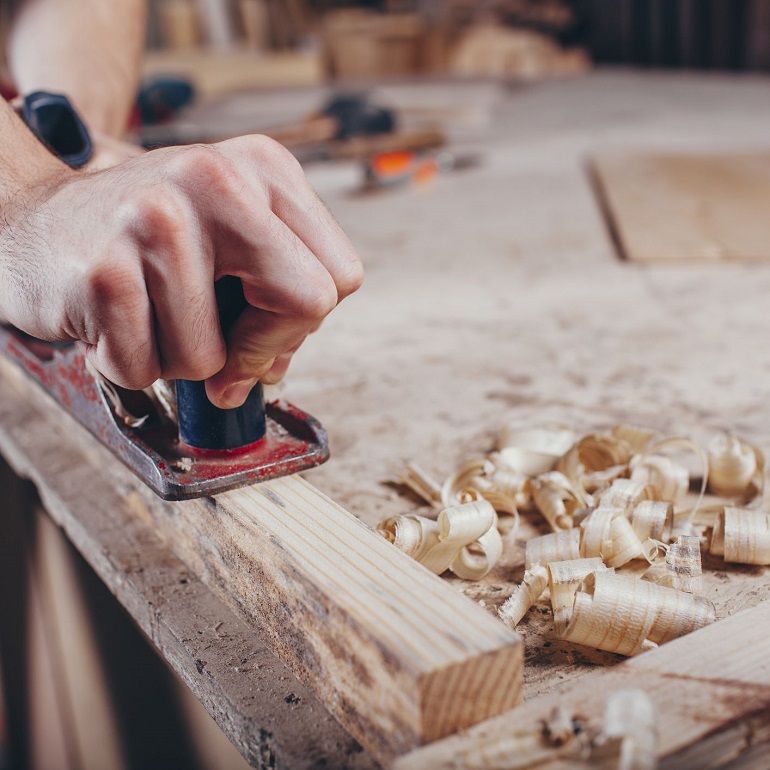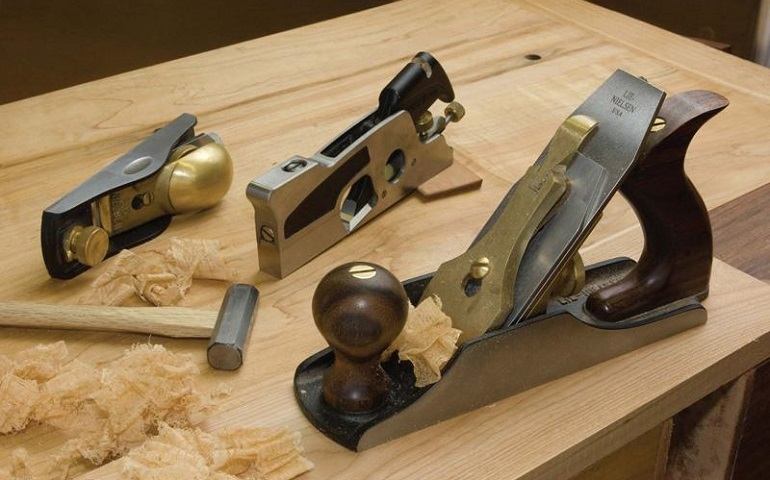Working with wood can be extremely rewarding. With a little patience and (a lot of) skill, you can shape logs and lumber into just about anything possible. But the right tools at each stage of your project make that a more pleasurable experience.
Some will be used at the beginning to get planks and boards to size, while others can get those smooth surfaces and delicate details that make the finished product unique. Hand planes are often used in both cases, and are one of the more versatile tools any joiner, carpenter, woodworker or passionate DIY-er will have in his or her toolbox. They can be used on their own, or with other non-powered tools, but are often the first point of call before bigger, powered tools step into the picture.
What are Wood Planes?

Planes are woodworking tools to get rough pieces of wood down to a smooth, level finish or ‘plane’. There are different variants, both as hand planes where more precision is required, and powered planes that are good for high stock material removal.
Where and How are Wood Planes Used?
Planes have been around since antiquity. And the basic design hasn’t changed much since then. They’re one of the factors that have literally shaped society. Planes allow for smooth surfaces in any piece of wood, and join those pieces to the right fit. This has made simple things like doors and windows possible. But they’re not restricted to just squaring edges, or shaving unwanted surfaces off wood one thin layer at a time. Specialty planes can be used to straighten boards, and get finer details, like grooves and rabbets, And they are fairly easy to use, if you know what you’re doing. Planes are pushed along the grain of the wood with just the right amount of pressure, and in long, clean strokes. This is to ensure that the wood doesn’t sustain any unwanted damage from the blade, and get you stuck in the middle of your workpiece. The process is repeated until the surface you’re after crops up.
Parts of Plane
A hand plane is designed around a wooden or metal body that holds all other parts together. This includes the cutting blade, often set at an angle of 45 degrees, the ‘frog’ that attaches the blade to the body, and with controls to adjust tension, and the mouth at the front that sits square with the workpiece, The bottom of the plane, and the part in direct contact with the wood is aptly called the ‘sole’. Pushing the plane involves the use of the front knob placed atop the mouth, and the rear tote or handle just above the ‘heel’. This design is basically the same across the different variants of hand planes.
Types of Hand Planes
Different uses and wood finishes call for different types of planes. There are dozens of planes used. Some of the most common are:
Bench Planes
These are the epitome of a wood hand plane, and the first type that comes to mind when talking about planes. Their name comes from the fact that they’re often used on wood benches when shaping wooden workpieces. Bench planes are more precisely a group of planes in different sizes ( and lengths and widths of the blade) and intended for different jobs. They are tasked with doing three jobs with equal efficiency – to straighten wood, smooth it and remove it. And each task is assigned to a different subtype of bench hand plane.
Smoothing planes are often the last you’ll use. They smooth out any remaining imperfections. They have soles coming at 5 to ten inches in length, making them one of the more compact planes out there. Next in overall size are fore planes, with soles ranging from 14 to 20 inches long. These are used for quick removal of wood. This is often the first plane woodworkers use in many projects. When there’s the need to straighten wood, jointer planes are used. These are larger than both smoothing and fore planes, with soles 22 to 30 inches long and generally used after the wood has been straightened with a fore plane.
Joinery Planes

These are a more specialised type of hand plane, and encompass variants used to get different types of joints and trims in wood ready for jointing, such as when assembling furniture. Joinery planes also display more variety in terms of designs and sizing. Typical examples are rabbet planes, for cutting rabbet joints on the edge or end of a board. Plough planes are tasked to get cleaner grooves in the grain and at board ends. Tongue and groove planes are used to get joints of the same name in objects like wooden chests, backs of cupboards or wooden flooring. Router planes are used in levelling joint bottoms, while smaller versions are useful for cleaner joints in mortises or tenons,
Moulding Planes
Moulding planes are used for decorative work. Here there are hollow and round planes that allow woodworkers to cut dozens of different shapes into the wood and at different depths and angles, side bead planes, are used for example in decorative finishes in window and door frames. and so-called dedicated moulding planes with a single cutting profile. All need more skill and knowledge to work with than either bench or joinery planes.
